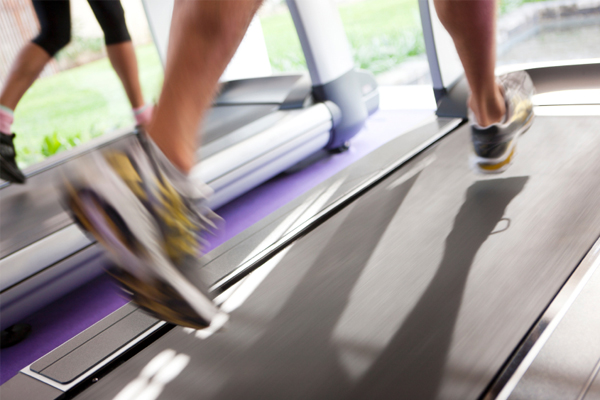If you didn’t already know, HIIT stands for High Intensity Interval Training. The simplest way to explain HIIT is that it’s an organized cardiovascular training method. It’s comprised of high intensity exercise intervals of short durations mixed with low intensity intervals for recovery. It requires high effort (on an intensity scale of 1-10, at least a 7) of sprints lasting from thirty seconds to two minutes, followed with a different low intensity exercise lasting 1-2 minutes. The low intensity part of the workout is designed to be a break in order for your body to recover from the sprints and prepare itself to begin sprinting again.
What are the benefits of HIIT?
Why would someone choose HIIT over a standard, lengthier cardio session? The difference between the two is the amount of calories burned after the workout is complete. After finishing a long distance jog, your body stops burning calories as soon as you stop jogging. After HIIT training, you’re body continues to burn calories even after you’re done sprinting. That means you can spend less time on your cardio workout and still burn at least the same amount of calories, if not more. More benefits include:
- Trains both your aerobic and anaerobic systems
- Limits muscle loss
- Uses your body fat as it’s fuel, causing metabolic adaptions
There are two reason why’s it’s important to keep this workout so brief. First, if you perform an intense workout like this more than 20-30 minutes at a time, you’re risking the chance of putting your body in a detrimental and catabolic state. When that happens, your body begins burning muscle rather than fat in order to keep up.
One of the reasons some people prefer HIIT is because it means you get to spend less time in the gym. Though that may seem nice, it doesn’t mean this workout is easy. In fact, it’s actually quite difficult and revolves around a similar concept like Crossfit. HIIT is a short but yet very high intensity aerobic workout, and it may not be for everyone. It is not recommended for those with cardiovascular issues, for those with health issues that may limit high intensity exercise, or for those who are new/not used to aerobic exercise. If you’re unsure on where you stand with HIIT workouts, it’s best to consult your doctor before trying it on your own.
What does a typical HIIT workout look like?
Another great thing about HIIT is can be used for multiple activities (not just running) such as cycling, stair climbing, elliptical, treadmill, jumping rope, and even kettlebells. One HIIT workout I like to have many of my clients do is on a treadmill. They start by walking at a 3-4 mph pace on a 10%+ incline. After two minutes have gone by, they switch to a sprint (as fast as they can) on a flat incline for one minute. After the sprint, they switch back to the walking on incline for two minutes again. I have them alternate between the two for a minimum of 20 minutes and a maximum of 30 minutes.
Another example would be alternating between sprints and lunges. A good place to do this workout would be on a track, both as an indoor and outdoor work. Start by warming up with walking for about five minutes. When ready, begin a one minute sprint as fast as you can. Next, slow it down with 20 step through lunges (1o on each leg). When you’re finishing your last lunge, take off into another one minute sprint. After alternating between these two for 20 minutes straight, you’re done! Simple, right?
HITT workouts are not limited to anything specific. You can easily make up your own by following only a couple of rules. Pick a type of cardiovascular activity you enjoy and mix it up with another slow-paced movement you can do for the recovery part. Alternate between the two for 20-30 minutes and you’re set (just make sure you’re giving it your all for whatever cardio you choose)!
Also Read:
HIIT at Home Workout with Jessica Smith

